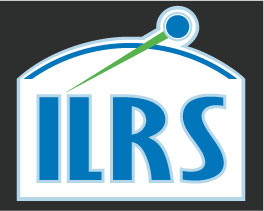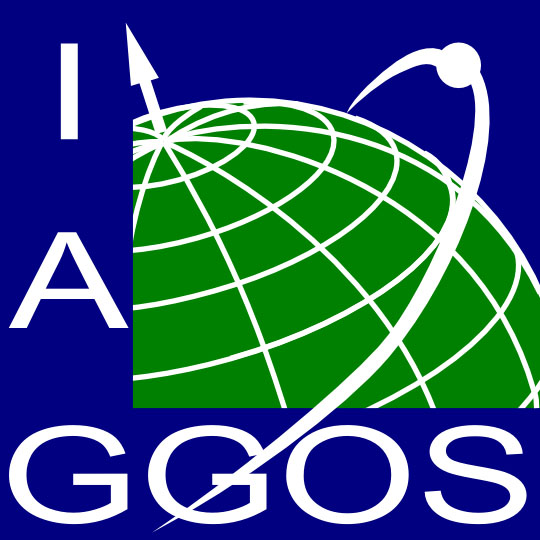
QZSS
Jump to: Mission Objectives, Mission Instrumentation, Mission Parameters, Additional Information
Mission Photos:
Mission Objectives:
The Quasi-Zenith Satellite System (QZSS) is a Japanese satellite navigation program planning for a future evolution to the regional satellite navigation system in East Asia and Oceania. A two stage system deployment is planned. In the first step, is the launch of a single satellite (QZS-1) in 2009 for technical validation and application demonstration. The second step involves the launch of the second and third satellites several years later to demonstrate full system operation. JAXA and related research institutes are in charge of technology development and demonstration of GPS complement and augmentation from QZSS.
QZSS is a four satellites constellation where each satellite is placed in the different orbital planes with inclined, geo-synchronous period and slight eccentricity. Each satellite is allocated in an orbit so as to pass over the same ground track at constant intervals with at least one satellite in place near zenith over Japan. QZS-1 was launched in 2009 by H-IIA launch vehicle from Tanegashima Space Center in Japan.
The QZSS has complete interoperability with GPS and will be worked as a GPS satellite with better geometrical position. QZSS will improve availability and DOP compared with use of GPS only, especially in urban canyon and mountainous terrain. The satellite system is also a good platform for WDGPS (Wide-area Differential Global Positioning System). High elevation angle characteristics can be applied to the WDGPS platform for stable link.
QZS-1 precise orbit ephemeris will be transmitted through the QZS-1 Navigation Message in the same way as is currently done in GPS. JAXA will perform QZS-1 precise orbit determination using L-band Navigation data received at monitor stations. The target accuracy of SIS-URE (radial direction) is several tens centimeters. SLR of QZS-1 is necessary to estimate navigation data biases and evaluate orbit determination accuracy.
NOTE: In February, 2017, responsibility for the QZSS transitioned from JAXA to the Cabinet Office, Government of Japan.
Mission Instrumentation:
QZS-1 has the following scientific instruments:
- Radiation Cooled TWT
- Laser Reflector
- C-band TTC, L1-SAIF, L-band Helical Array, and TWSTFT Antennas
QZSS Mission Parameters:
| Satellite | QZS-1 | QZS-2 | QZS-3 | QZS-4 |
| Sponsor: | Cabinet Office, Government of Japan | Cabinet Office, Government of Japan | Cabinet Office, Government of Japan | Cabinet Office, Government of Japan |
| Expected Life: | 12 years | 15 years | 15 years | 15 years |
| Primary Applications: | Satellite navigation | Satellite navigation | Satellite navigation | Satellite navigation |
| Primary SLR Applications: | Calibration of GPS orbits | Calibration of GPS orbits | Calibration of GPS orbits | Calibration of GPS orbits |
| COSPAR ID: | 1004501 | 1702801 | 1704801 | 1706201 |
| SIC Code: | 1581 | 1582 | 1583 | 1584 |
| Satellite Catalog (NORAD) Number: | 37158 | 42738 | 42917 | 42965 |
| Launch Date: | 11-Sep-2010 | 01-Jun-2017 | 19-Aug-2017 | 10-Oct-2017 |
| NP Bin Size: | 300 seconds | 300 seconds | 300 seconds | 300 seconds |
| RRA Diameter: | 1.6" | 1.6" | 1.6" | 1.6" |
| RRA Shape: | Planar | Planar | Planar | Planar |
| Reflectors: | 56 corner cubes | 56 corner cubes | 56 corner cubes | 56 corner cubes |
| Altitude: | 32,000-40,000 km | 32,000-40,000 km | 36,000 km | 32,000-40,000 km |
| Inclination: | 45 degrees | 45 degrees | 0 degrees | 45 degrees |
| Orbit: | Elliptical | Elliptical | Geosynchronous | Elliptical |
| Eccentricity: | 0.075 | 0.075 | 0 | 0.075 |
| Satellite | QZS-1R | QZS-6 |
| Sponsor: | Cabinet Office, Government of Japan | Cabinet Office, Government of Japan |
| Expected Life: | 15 years | 15 years |
| Primary Applications: | Satellite navigation | Satellite navigation |
| Primary SLR Applications: | Calibration of GPS orbits | Calibration of GPS orbits |
| COSPAR ID: | 2109601 | 2025-023A (ILRS ID 2502301) |
| SIC Code: | 1585 | 1586 |
| Satellite Catalog (NORAD) Number: | 49336 | 62876 |
| Launch Date: | 26-Oct-2021 | 2-Feb-2025 |
| NP Bin Size: | 300 seconds | 300 seconds |
| RRA Diameter: | 1.6" | X:340.3mm, Y:350.2mm, Z:56.1mm |
| RRA Shape: | Planar | Planar |
| Reflectors: | 56 corner cubes | 56 corner cubes |
| Altitude: | 32,000-40,000 km | 36,000 km |
| Inclination: | 45 degrees | 0 degrees |
| Orbit: | Elliptical | Geosynchronous |
| Eccentricity: | 0.075 | 0 |
Additional Information:
Web sites:
- Cabinet Office, Government of Japan websites:
- IGS Multi-GNSS Experiment (MGEX) constellation page for QZSS
Documents:
Publications:
- Inaba, N., Matsumoto, A, Hase, H., Kogure, S., Sawabe, M., and K. Terada (2009), "Design concept of Quasi Zenith Satellite System", Acta Astronautica, 65(7-8), pp. 1068-1075, DOI: 10.1016/j.actaastro.2009.03.068
- Kogure, S., Ganeshan, A., Montenbruck, O. (2017). "Regional Systems". In: Teunissen, P.J., Montenbruck, O. (eds) Springer Handbook of Global Navigation Satellite Systems. Springer Handbooks. Springer, Cham. doi: 10.1007/978-3-319-42928-1_11
- Bury, G., Sośnica, K. & Zajdel, R. (2019). "Multi-GNSS orbit determination using satellite laser ranging", J. Geodesy, 93, 2447–2463, doi: 10.1007/s00190-018-1143-1
- Chen G., Guo J., Gent T. and Zhao QL. (2023). "Multi-GNSS orbit combination at Wuhan University: strategy and preliminary products", J. Geodesy, 97(5), doi: 10.1007/s00190-023-01732-2
- Darugna, F, Steigenberger, P., Montenbruck, O., Casotto, S., Ray-tracing solar radiation pressure modeling for QZS-1, Advances in Space Research, Vol. 62, Issue 4, August, 2018, DOI: 10.1016/j.asr.2018.05.036
- Duan, B., Hugentobler, U., and I. Selmke (2019), "The adjusted optical properties for Galileo/BeiDou-2/QZS-1 satellites and initial results on BeiDou-3e and QZS-2 satellites", Adv. Space Res., 63, 1803–1812, DOI: 10.1016/j.asr.2018.11.007
- Ikari S., Akiyama K., Igarashi Y. et al. (2023) "Accurate analytical non-gravitational force model for precise orbit determination of QZS-1, 2, and 4", GPS Solutions, 27, 190, doi: 10.1007/s10291-023-01527-0
- Kawate K., Igarashi Y., Yamada H. et al. (2023). "MADOCA: Japanese precise orbit and clock determination for GNSS", Adv. Space Res., 71(10), 3927–3950, doi: 10.1016/j.asr.2023.01.060
- Li, X.X., Yuan, Y.Q., Huang, J.D. et al., (2019), "Galileo and QZSS precise orbit and clock determination using new satellite metadata", J. Geodesy, 93(8), pp. 1123-1136, DOI: 10.1007/s00190-019-01230-4
- Montenbruck O., Steigenberger P., Prange L. et al. (2017). "The Multi-GNSS Experiment (MGEX) of the International GNSS Service (IGS) – Achievements, prospects and challenges", Adv. Space Res., 59(7), 1671–1697, doi: 10.1016/j.asr.2017.01.011
- Sośnica K., Zajdel R., Bury G. et al. (2020). "Quality assessment of experimental IGS multi-GNSS combined orbits", GPS Solutions, 24(2), doi: 10.1007/s10291-020-0965-5
- Yuan Y.Q., Li X.X., Zhu Y.T., et al. (2020). "Improving QZSS precise orbit determination by considering the solar radiation pressure of the L-band antenna", GPS Solutions, 24(2), 50, DOI: 10.1007/s10291-020-0963-7
Other:
- QZSS satellite metadata information
- "QZSS Replenishes 4-Satellite Constellation, Replacing Inaugural Michibiki", (Inside GNSS, Oct. 28, 2021).
- "QZSS is Becoming a Seven-satellite Constellation" (Cabinet office of Japan, April 2024)





